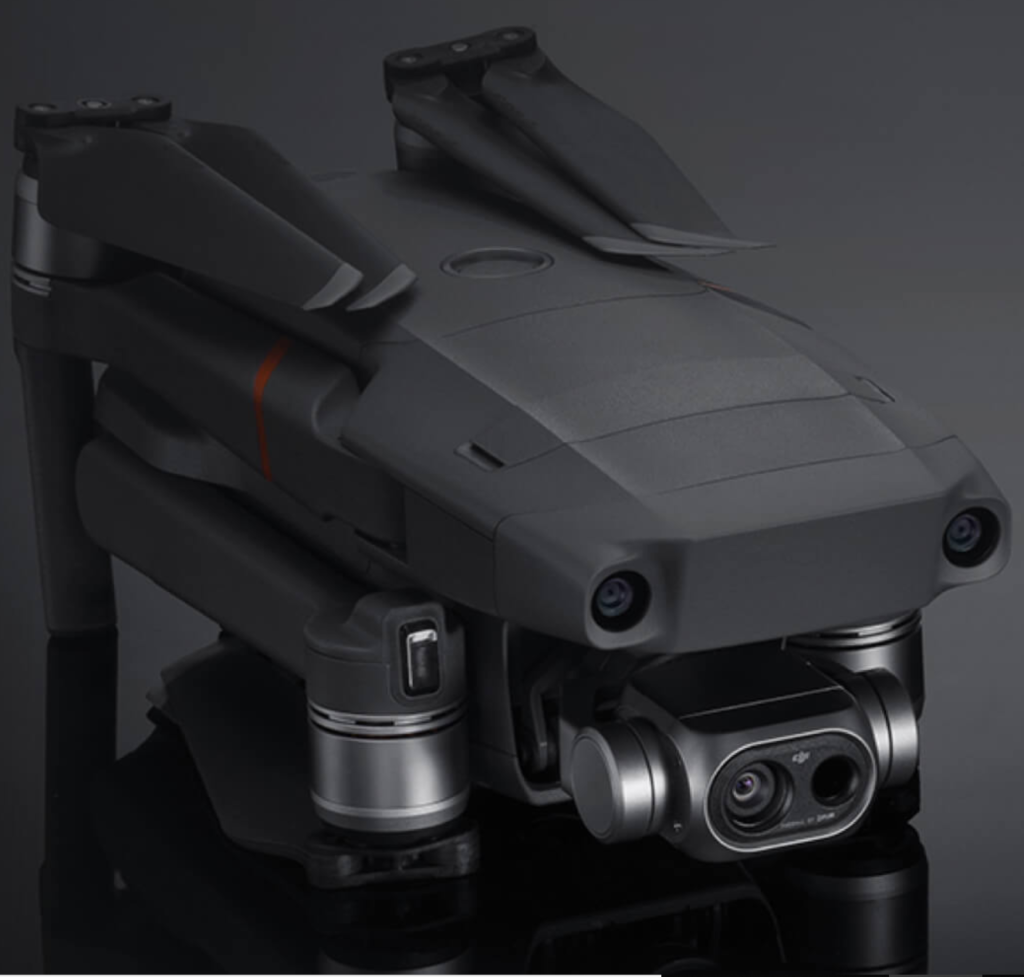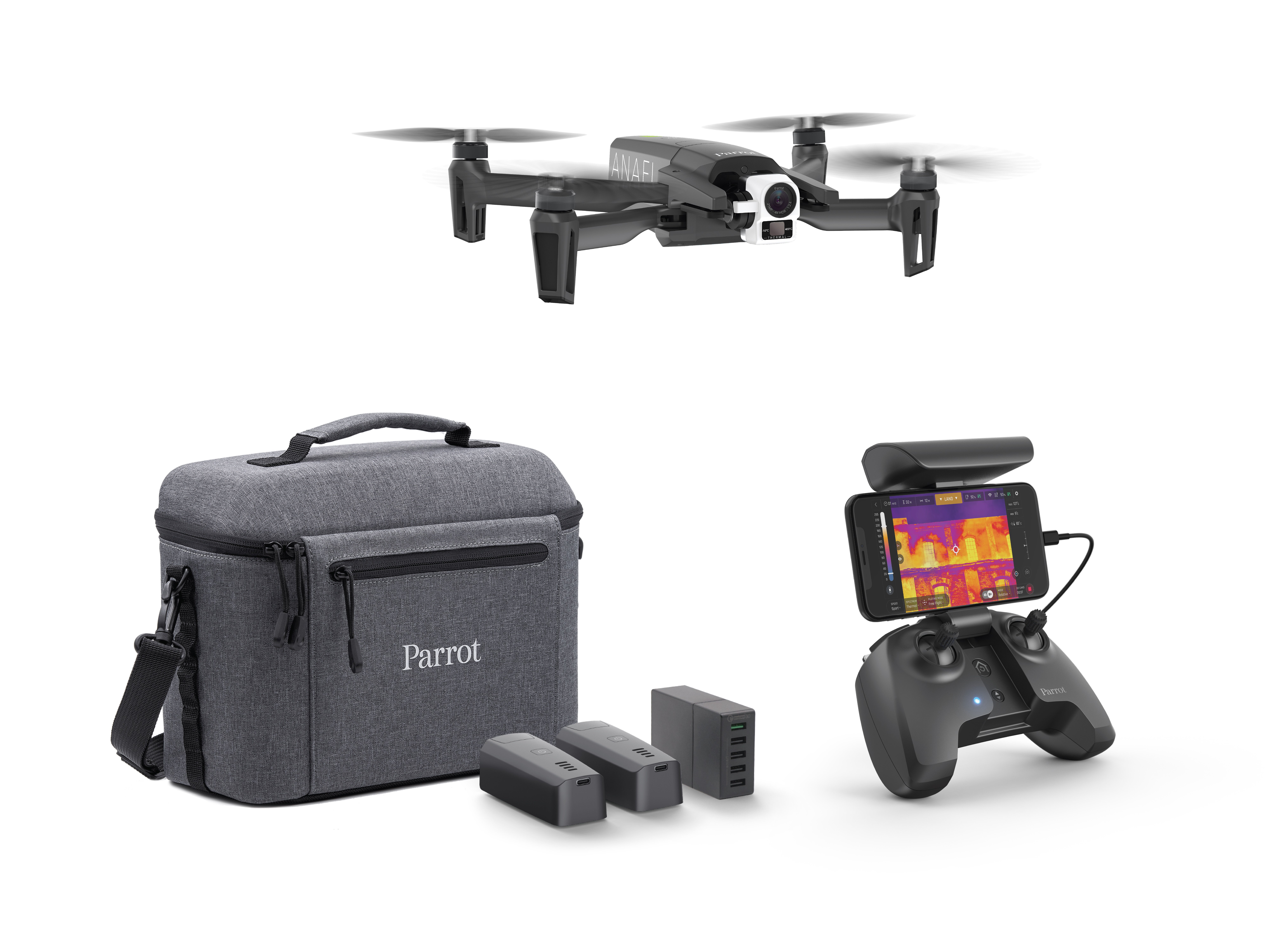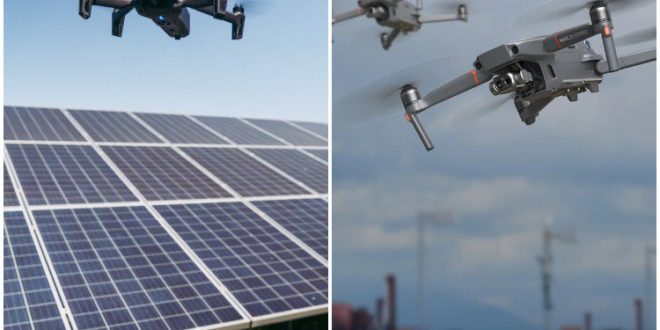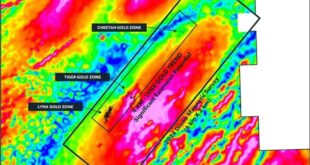In the past six months, two interesting products have hit the market from the drone industry’s leading manufacturers, DJI and Parrot. Both aim to make aerial thermal imagery accessible and affordable.
In December 2018, DJI launched the Mavic 2 Enterprise Dual, an iteration of the Mavic 2 Enterprise that swaps out the standard payload for side-by-side visual and thermal cameras.
In April, Parrot responded with the Anafi Thermal, another portable thermal drone designed to cater to the same market: first responders, search and rescue teams, inspection crews and any other enterprise keen to harness thermal imagery from above.
Both drones incorporate FLIR’s Lepton 3.5 miniature thermal imaging unit beside ordinary cameras. And both are effectively iterations of consumer platforms: The original Parrot ANAFI and the DJI Mavic 2 Pro.
So how do the two drones compare and which represents the best option for organizations exploring the potential of thermal imagery?
DJI Mavic 2 Enterprise Dual Vs Parrot ANAFI Thermal
Below is a table of the main technical specifications of each drone. Beneath that is our breakdown of the main differences.
| DJI Mavic 2 Enterprise Dual | Parrot ANAFI Thermal | |
| Flight time | 31 Minutes (at a consistent speed of 15 mph) | 26 minutes |
| Weight | 899 g | 315 grams |
| Range | 8,000 m (4.9 miles) | 4,000m (2.5miles) |
| Max Ascent Speed | 5 m/s in sport mode. 4 m/s in standard mode | 4 m/s |
| Max Descent Speed | 3 m/s | 4 m/s |
| Max Speed | 44 mph (S-mode, without wind) | 34 mph |
| Safety Systems | DJI’s Advanced Pilot Assistance System (APAS)
Omnidirectional Obstacle Sensing: left/right, up/down, and forward/backward. |
Return to home function Customizable geofence |
| Price | $2,699 / €2,899 | $1,900/ €1,900 |
| Video Recording | 4K Ultra HD:3840×2160 30p. 2.7K:2688×1512 30p FHD: 1920×1080 30p |
Video format: MP4 (H264) HDR: 4K UHD, 2.7K and 1080p videos |
| Standard Camera | Sensor: 1/2.3″ CMOS, 12 MP FOV: approx 85° Format Equivalent: 24mm Aperture: f/2.8 Autofocus at: 0.5m |
Sony® CMOS HDR sensor 1/2.4’’ 21MP |
| Thermal Camera | Both models incorporate FLIR’s Lepton 3.5 miniature thermal camera.
The radiometric Lepton captures accurate, calibrated, and noncontact temperature data in every pixel of each image. (High-gain) or -10° to +400°C (Low-gain) Video: MP4 |
Both models incorporate FLIR’s Lepton 3.5 miniature thermal camera.
The radiometric Lepton captures accurate, calibrated, and noncontact temperature data in every pixel of each image. (High-gain) or -10° to +400°C (Low-gain) Video: MP4 |
| Zoom Functions | N/A |
Digital Zoom |
| Thermal Features | Multispectral dynamic imaging – embosses high-fidelity, visible light details onto the thermal imagery in real time to enhance visual details.
Spot Meter – Displays the average temperature of an object, helping pilots monitor and measure critical or hazardous objects. Area Measurement – Displays the average, lowest, and highest temperature, as well as the corresponding locations of each area Isotherm – Allows pilots to designate specific temperature ranges to be displayed using a custom color palette so objects within the range relay higher contrast and better visibility. |
Parrot has built three main thermal features using FLIR’s technology: Relative: the scene is colored with a gradient color scale from the coldest temperature on the scene to the hottest. This group displays the full extent of temperature differences. Absolute: the user manually chooses the temperature range of the color gradient to highlight specific areas. Spot: this mode is used to instantly identify thermal anomalies. Only the hottest or coldest spots are isolated. |
| Battery Charging Time | 90 minutes | 105 minutes |
| Base Package Includes | Mavic aircraft, a remote controller, one self-heating battery, Mavic 2 Enterprise Spotlight, Mavic 2 Enterprise Loudspeaker, Mavic 2 Enterprise Beacon and a protector case with flight tools |
1 ANAFI Thermal drone 1 Parrot Skycontroller 3 3 smart batteries 1 shoulder bag 1 multi-port USB charger 1 tablet holder 8 spare propeller blades 1 16 GB microSD card 4 USB-A/USB-C cables |
| Image stabilization | 3-axis gimbal | 3-axis gimbal |
| Internal Storage | 24 GB | N/A (16GB SD Card Provided) |
| Dimensions in flight | 322×242×84 mm | 218x69x64 mm |
| Dimensions folded | 214×91×84 mm | 241x315x64 mm |
| Other notable features | Interchangeable accessories. Unparalleled obstacle avoidance. |
Camera tilts horizontally 180 degrees for inspections from underneath structures. Battery can be charged directly through USB cable. Digital lossless zoom. |
Thermal Functionality
Both drones have the same miniature thermal camera from FLIR, so there’s nothing between them in terms of thermal capability.
However, the way the technology is applied and the ease with which it’s deployed is largely down to the DJI and Parrot pilot applications.
We’ve tried Parrot’s Freeflight application and found it to be intuitive and easy to navigate. We haven’t taken the Enterprise Dual for a spin yet so we can’t compare that aspect.
Where the DJI Mavic 2 Enterprise Dual comes into its own
The Mavic 2 Enterprise Dual beats the Parrot ANAFI Thermal in a number of key departments. Its flight time is longer by around 5 minutes, it’s faster, its range is around double the ANAFI Thermal’s and it comes with several accessories that make it a much more versatile tool for public safety missions.
On top of that, DJI’s drone comes with sophisticated computer vision and safety systems. Even with a capable pilot, these could be the difference between a successful mission and a mission-ending accident.
Parrot’s lack of obstacle avoidance technology was a defining omission with the original ANAFI. It remains a compelling reason to go with DJI instead.

Read more: The Next Amazing Drone Use Case: FLIR Talks Thermal Payloads
Where the Parrot ANAFI Thermal strikes back
The Parrot ANAFI Thermal isn’t totally eclipsed by DJI’s Mavic 2 Dual.
For starters, it’s significantly lighter (315g compared to 899g). That makes it more portable than DJI’s offering and also puts its solid 26-minute flight time into perspective.
Both drones have the same FLIR thermal unit. But when it comes to the standard camera, the ANAFI Thermal just has the upper hand. It can capture greater detail and also features lossless zoom – something that could come in handy for search and rescue teams, for example.
The ANAFI Thermal has one final feature that could be harnessed by inspection teams: a camera that can tilt all the way up. This means crews can fly underneath structures and inspect them from below.
Finally, we come to the price and the total package. The ANAFI Thermal is $700 cheaper and includes two extra batteries as part of the base package. That’s equivalent to well over an hour of flight time in total.
Very few commercial operators are going to go into the field without spare batteries, so you can add another $100+ to the total for each extra battery you need if you choose to fly DJI instead.

The ANAFI Thermal comes with three batteries included in the base package.
Read more: FLIR Makes Strategic Investment in DroneBase: Collaboration on Products and Training
Final Thoughts
There is undoubtedly room in the emerging thermal drone market for both the ANAFI Thermal and the DJI Mavic 2 Enterprise Dual.
With its cheaper price point and generous base package, the ANAFI Thermal represents solid value for money and is a capable option for organizations experimenting with thermal imagery from above.
It’s also a highly portable solution that can be easily transported and off the ground in a matter of seconds. The lossless zoom and quirky camera functionality could prove useful for niche inspection missions.
However, DJI’s more expensive model is undoubtedly a stronger all-around package. If you’re happy to pay extra (and even more on top to get those all-important extra batteries), you get a drone that can stay airborne for longer with a range of safety features to keep your mission on track.
The Mavic 2 Enterprise Dual’s added accessories, which include a beacon, a spotlight and a loudspeaker, make it a versatile option for public safety operations.
Malek Murison is a freelance writer and editor with a passion for tech trends and innovation. He handles product reviews, major releases and keeps an eye on the enthusiast market for DroneLife.
Email Malek
Twitter:@malekmurison
Subscribe to DroneLife here.
https://dronelife.com/2019/05/09/comparison-parrot-anafi-thermal-vs-dji-mavic-2-enterprise-dual/
 Unmanned Aerial Vehicle The latest drone news
Unmanned Aerial Vehicle The latest drone news



